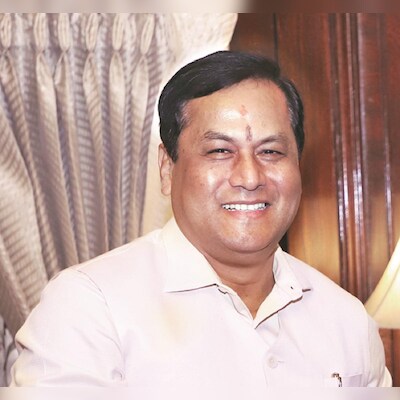Sarbananda Sonowal, Union Minister for Ports, Shipping and Waterways
In what could be a boost to India’s nascent shipbuilding industry, companies from Japan and South Korea have expressed interest in investing in the sector, Union Minister for Ports, Shipping and Waterways Sarbananda Sonowal said.
“This could involve direct investments, joint ventures, technology sharing or other forms of collaboration. This international interest is a testament to the attractiveness of India’s shipbuilding initiative and the potential benefits of global expertise and capital injection into the sector,” Sonowal told Business Standard in an interview after the recently concluded Maritime State Development Council (MSDC) meeting.
On Friday, the ministry announced plans to build multiple shipbuilding clusters in collaboration with coastal states to meet its ambitious targets. Currently, India ranks 20th in global shipbuilding, with just 0.06 per cent market share. In contrast, China, South Korea and Japan dominate the industry, with 85 per cent of the global share, according to a recent presentation by the Ministry of Shipping.
“The Ministry has a clear vision for phased development of shipbuilding clusters, with the expectation that 2-3 clusters will be developed and operationalized within the next 10 years, followed by 1-2 additional clusters within the next five years,” Sonowal said.
“This phased approach allows for careful planning, resource allocation and addressing any challenges that arise during the initial stages of development,” added Sarbananda Sonowal.
According to Sonowal, new entrants with a “strategic move to diversify business interests” have also expressed to the government their intention to enter this sector.
According to recent reports, India’s largest port operator, Adani Ports and Special Economic Zone, is looking to venture into shipbuilding.
The minister also said the government’s push for shipbuilding had prompted state and private shipyards to invest more. “They are looking to expand their operations, which could mean increasing their shipbuilding capacity, improving technological capabilities or diversifying their product offering,” he said.
To support this expansion, the Ministry has sought assistance from the states in the Goa MSDC. The bulk of the central government’s capital support will come primarily from a Maritime Development Fund of about Rs 30,000 crore, 49 per cent of which will be funded by the Centre and the rest by port authorities and private investors.
The shipbuilding industry has informed the government that its main logistical requirement for establishing successful shipbuilding clusters is to gain access to large clustered parcels of land with suitable water frontages and sufficient channel depth.
“The availability of a shoreline is crucial for shipbuilding activities as it enables the construction, launching and testing of vessels, while sufficient channel depth is needed to allow the movement of large vessels in and out of shipyards. Meeting these requirements is critical for the operational success and competitiveness of shipbuilding sectors,” Sonowal said.
In response to the industry’s needs, coastal states will soon formulate policies and develop incentive schemes. “These may include facilitating land aggregation, ensuring the availability of adequate coastal zone, streamlining procedures and approvals to reduce bureaucratic delays, subsidies, tax exemptions or other fiscal benefits,” the minister said.
The ministry is also addressing investment gaps by developing common maritime assets, such as dry docks, testing grounds and R&D centres, that can be shared across the industry. This will reduce the capital expenditure of individual companies and promote overall industry growth.
Sonowal said the aim was to identify and repurpose existing tracts of land that may be underutilised or not being utilised to their full potential. “These lands could be under the jurisdiction of state maritime boards, located within port premises or situated within industrial corridors,” he said.
For its part, the Ministry is seeking to close the gap for investments in common maritime assets that can be used by the industry in general.
“These assets may include shared facilities such as dry docks, testing grounds and research and development centres. By providing access to these common assets, the government aims to reduce the capital expenditure required by individual companies, thereby facilitating the growth of the entire industry,” Sonowal said.
According to the ministry, the share of cargo carried by Indian-owned or flagged vessels has fallen to just 5.4 per cent over the past decade. If left unchecked, this share may fall further, potentially reducing the role of Indian-built vessels even in the domestic market.
In the past, government schemes such as the Shipbuilding Financial Assistance Policy, Right of Preemption Policy, Infrastructure Status for Shipyards, etc. have failed to achieve the desired results.
First published: September 16, 2024 | 00:25 IS
Disclaimer:
The information contained in this post is for general information purposes only. We make no representations or warranties of any kind, express or implied, about the completeness, accuracy, reliability, suitability or availability with respect to the website or the information, products, services, or related graphics contained on the post for any purpose.
We respect the intellectual property rights of content creators. If you are the owner of any material featured on our website and have concerns about its use, please contact us. We are committed to addressing any copyright issues promptly and will remove any material within 2 days of receiving a request from the rightful owner.

